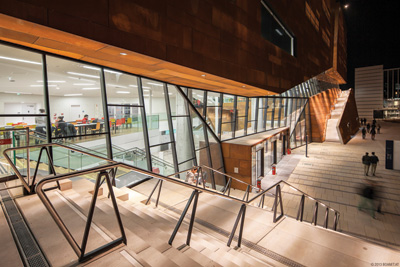Susan Powers
President, Urban Ventures
Denver, Colorado
- Creating mixed-income and multigenerational communities that offer access to healthy food and a healthy lifestyle is what I’m most interested in, and I believe the result will be improved health. As a private developer at Aria, I have carried the same set of values with me, and addressing the health of residents in the context of the development is just part of how we think about all of our work now.
- We are fortunate to be working with Regis University and the Colorado Health Foundation and with them are taking these concepts to the neighborhood scale, beyond the boundaries of our private development. The development community needs to be looking outside of our property lines because what we build impacts others, and the neighborhoods around our properties impact what we build.
